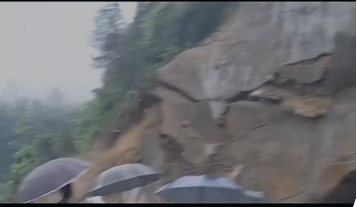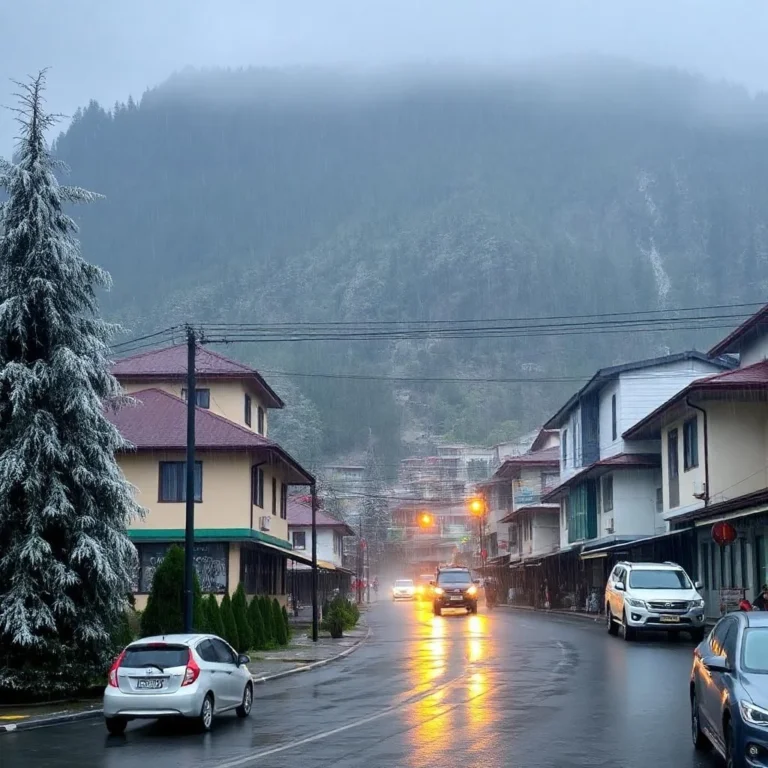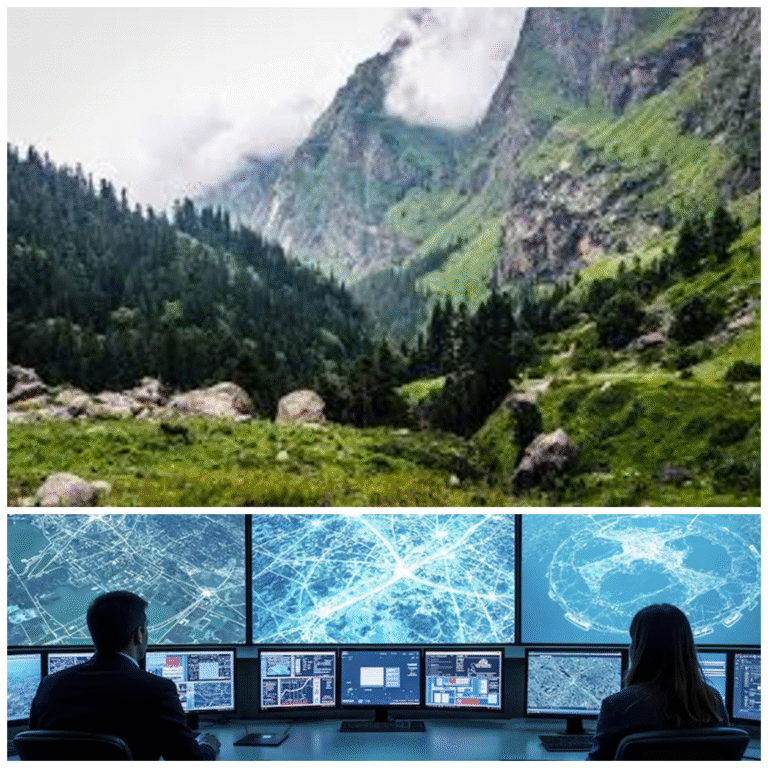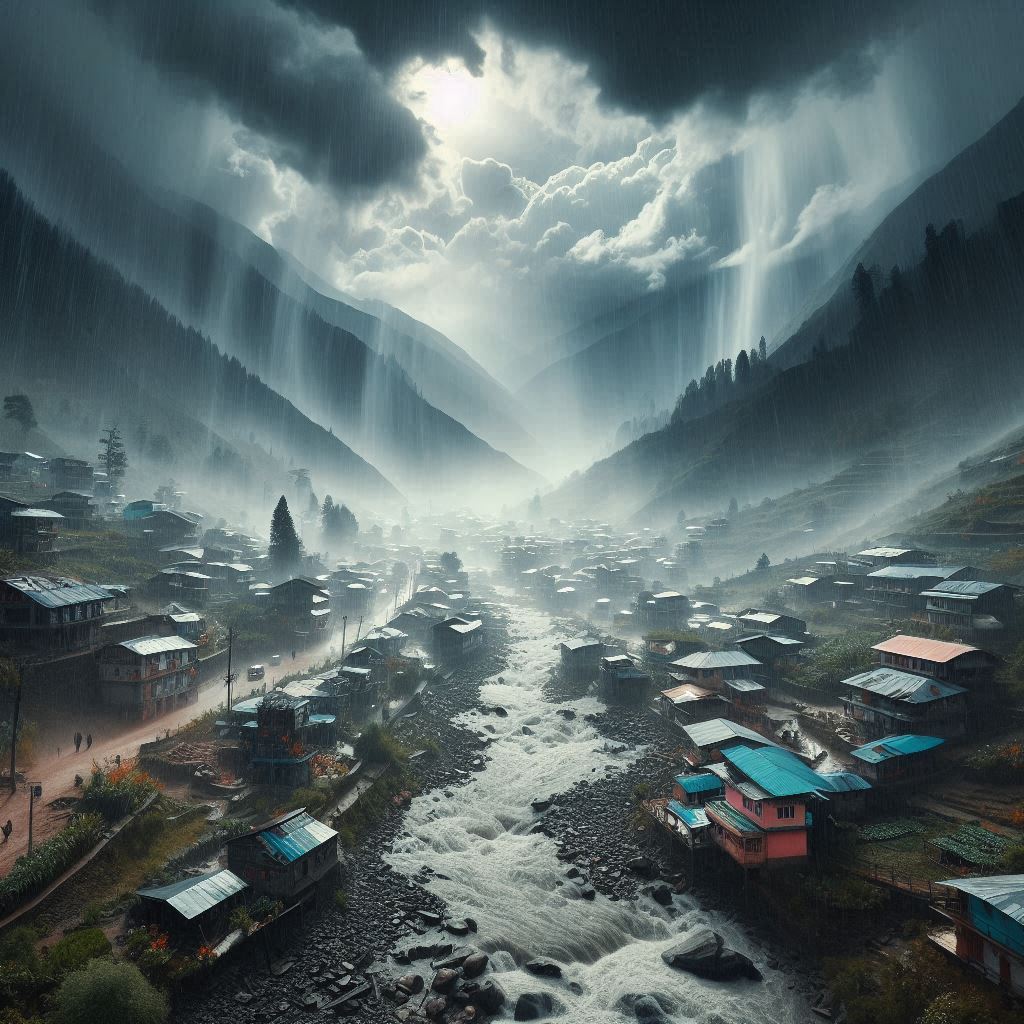
🌧️
For many years, people in Himachal Pradesh didn’t hear about cloudbursts very often. But today, it feels like every year we are hearing about them — heavy rains, landslides, floods, and damage to roads and homes.
So what’s really happening? Is this something new, or have cloudbursts always been there?
Let’s understand clearly.
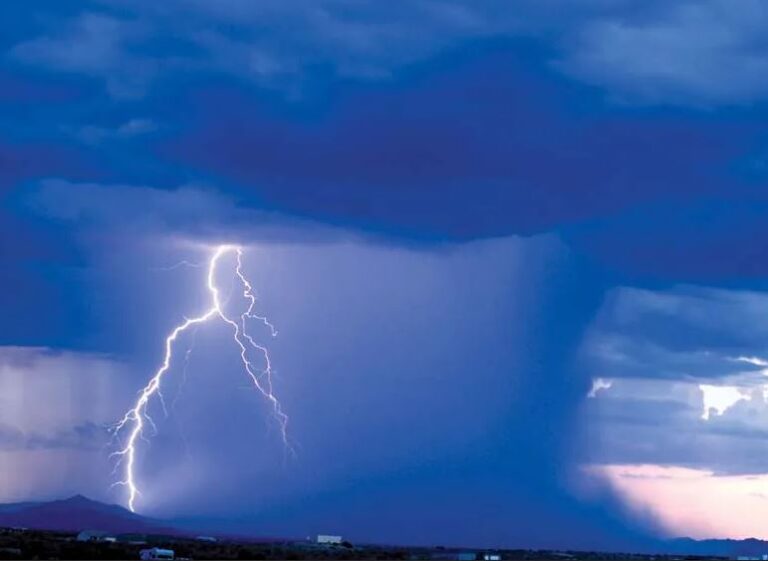
💧 What is a Cloudburst?
A cloudburst is when a huge amount of rain falls suddenly — usually more than 10 cm (100 mm) in just one hour , or 15–20 cm in a few hours , over a small area.
This sudden heavy rain causes:
- Flash floods
- Landslides
- Damage to houses, roads, and crops
- Danger to people living in hilly areas
🔍 Why Are We Hearing About It More Now?
There are two main reasons:
1. Climate Change
Because of global warming, rainfall patterns are changing . Rain comes less often, but when it does come, it’s heavier and more dangerous.
“Extreme rainfall events are increasing in the Himalayas.”
— India Meteorological Department (IMD)
“The frequency of cloudbursts has gone up since the early 2000s.”
— IIT Kanpur Research
2. Better Reporting and Technology
Earlier, even if a cloudburst happened in a remote village, no one outside would know. Today:
- Mobile phones and internet spread news fast.
- Weather stations warn us before heavy rains.
- News channels and social media share updates quickly.
So yes, we are seeing more cloudbursts both because they are actually happening more often and because we’re better at noticing them .
📜 History of Major Cloudbursts in Himachal Pradesh Since 1990
Let’s look at how often cloudbursts have occurred in Himachal Pradesh over the last 30+ years.
| 1994 | Chamba | Heavy rain caused flash floods in Ravi River; some villages were cut off. |
| 1998 | Kangra | Unseasonal heavy rains damaged crops and roads. |
| 2003 | Mandi | Localized cloudburst affected villages near Beas River. |
| 2005 | Shimla | Sudden heavy rain led to landslides on Hindustan-Tibet Road. |
| 2009 | Kullu | Flash floods after heavy rain disrupted tourism and transport. |
| 2010 | Una | Sudden rain caused local flooding and crop damage. |
| 2013 | Lahaul-Spiti | Cloudburst triggered massive landslides, cutting off Manali-Leh Highway. |
| 2014 | Solan | Heavy rains and landslides disrupted rail and road traffic. |
| 2015 | Sirmaur | Monsoon rains turned into extreme events, damaging infrastructure. |
| 2017 | Kinnaur | Cloudburst damaged apple orchards and homes. |
| 2018 | Bilaspur | Heavy monsoon rains caused rivers to overflow and flood villages. |
| 2019 | Hamirpur | Multiple incidents of landslides and flash floods reported. |
| 2020 | Mandi, Kullu | Repeated cloudbursts during monsoon season; rescue operations launched. |
| 2021 | Una, Bilaspur | Unusual rain ruined crops and flooded villages. |
| 2022 | Kangra, Chamba | Flash floods damaged roads and homes; tourists rescued. |
| 2023-2024-2025 | Mandi, Kullu, Lahaul-Spiti | IMD issued red alerts; landslides blocked key routes. |
⚠️ Notice : From 2013 onwards , cloudbursts are being reported almost every year — sometimes more than once a year.
🧑🔬 What Do Experts Say?
Here’s what trusted institutions tell us:
✅ India Meteorological Department (IMD)
“Rainfall in the northwestern Himalayas, including Himachal Pradesh, is becoming more intense and unpredictable .”
✅ Intergovernmental Panel on Climate Change (IPCC)
“South Asia is experiencing more frequent and stronger rainfall extremes due to rising temperatures.”
✅ Wadia Institute of Himalayan Geology (WIHG), Dehradun
“Melting glaciers and warmer weather make the region more prone to sudden rainfall and disasters like cloudbursts.”
🤔 So Was This Always Happening?
Yes, cloudbursts did happen before — but not this often. Earlier:
- They were rare.
- They were not widely recorded or known.
- Fewer people lived in risky areas.
Now:
- More people live in the hills.
- Tourism is high — more visitors in danger zones.
- Construction without planning makes things worse.
So while cloudbursts are not new, their frequency and impact are growing .
🛡️ What Can We Do?
We must take action:
- Learn about weather warnings and follow safety rules.
- Avoid building homes or roads in risky areas.
- Protect trees and forests — they help prevent landslides.
- Support climate-friendly habits: save energy, reduce waste, plant trees.
🧠 Final Thought
Cloudbursts are becoming more common due to climate change , and our better access to information helps us notice them more. The good news is: by learning and acting today, we can protect ourselves and our future.
Let’s stay alert, stay safe, and care for our environment.
